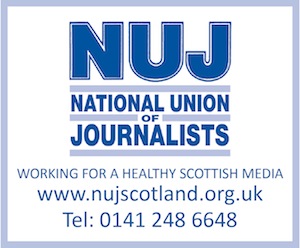A newspaper's website is as likely to result in more rather than fewer sales of the print version, because it helps underline 'brand' – according to the publisher of the world's second most popular English language newspaper website.
Says the publisher of the Daily Mail's website – former Scotsman, Daily Record and Scottish Daily Mail editor, Martin Clarke – a newspaper and its online version together constitute a brand and that, counter-intuitive though it may sound, visitors to a newspaper's website are more rather than less likely to buy the printed version as well.
Speaking at the Society of Editors' annual conference, taking place in Glasgow, Clarke told delegates: “Because for people who love a brand, it isn't a question of deciding whether to consume online or offline – they lap up both, just in different places and at different times.”
He continued: “The web as a whole may be a threat to print but if people aren't reading your paper, then, I'm sorry, it isn't because they spent five minutes on your website the night before and read a couple of headlines.”
Mail Online is now the second most popular English language newspaper website after the New York Times' website. But he sounded a couple of reality checks, not least that the traffic to newspaper websites in the UK – national and regional – plus overseas titles such as as the New York Times, and not forgetting magazines, adds up to no more than two per cent of total online visits in the country.
In truth, he said, visits to a news website are part of a person's daily communications mix, including to other news websites.
“The web is one big entertainment medium – and we are just part of it.”
He added too that referrals via Facebook constitute ten per cent of the Mail's online traffic, making it the “second most important referrer after Google”, adding, later: “If you have an engaging site that people want to visit in its own right then Facebook isn't a threat or a parasite but a gigantic free marketing engine.”
Reiterating a point made earlier during the conference – by media analyst, Jim Chisholm, that “newspapers with the healthiest websites also had the healthiest print circulations” – Clarke continued: “For instance, we're still trying to pin down an exact number, but we're confident 60 per cent of the 1.2 million Brits who visit MailOnline in any given weekday don't buy the paper. And many would never have bought the paper. But maybe they will. If not today, because they don't want to buy any paper, then maybe one day when they're older and it suits their lifestyle.”






